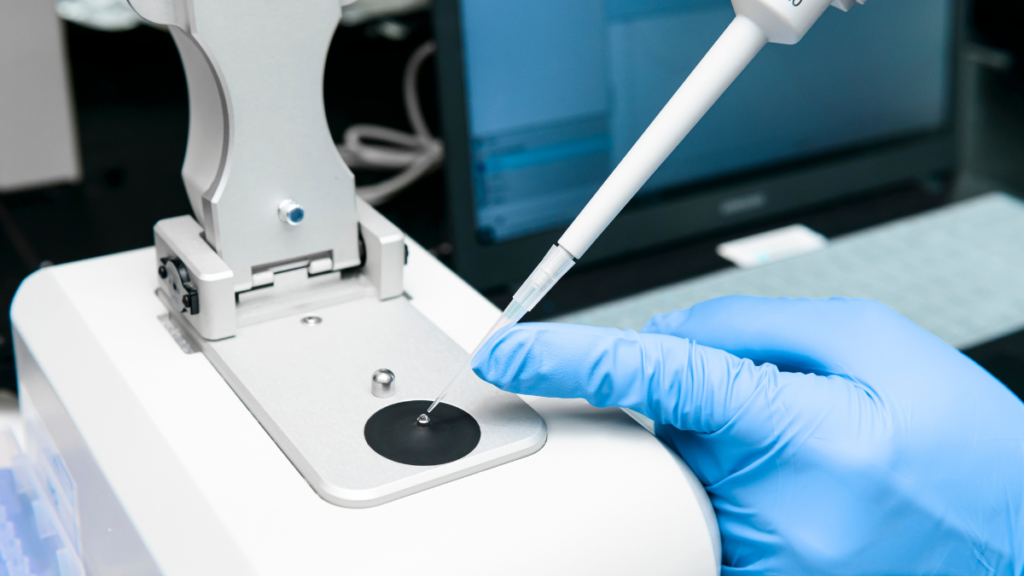Gel electrophoresis is a crucial technique often carried out in biological labs. Usually, the system applies an electric field to protein and nucleic acid fragments, allowing them to migrate on agarose gel matrix where the separation takes place based on charge and size.
Types of electrophoresis equipment
The types of electrophoresis equipment we know about are listed below:
- Horizontal electrophoresis systems conduct the separation on a horizontally-oriented gel slab
- Vertical electrophoresis systems conduct separation with the gel oriented in a vertical position
- Pulsed Field gel electrophoresis systems leverage an electric field that changes direction periodically, causing the DNA molecules to move randomly
- Capillary electrophoresis systems use capillaries for effectively separating molecular substances based on charge and size, resulting in high-resolution data
- Gel documentation systems also called gel imagers or gel docs are used to analyse and record the outcome of membrane blotting and gel electrophoresis
How to maintain electrophoresis system and power supply?
Electrophoresis is one of the most important laboratory techniques that leverage the power of electricity to separate nucleic acids and proteins based on their structure, size, and electrical charge. Therefore, you need to take adequate safety stapes to ensure that the electrophoresis power supply stays intact. Moreover, the other components of the system like a buffer tank and the gel tray need to undergo routine maintenance. Apart from this, many devices contain other safety features that help in preventing electric shocks, the integrated imaging system, and the control panel. Read here to follow the routine maintenance tips for your electrophoresis gear:
- Fine-tuning the device annually
A yearly inspection of the electrophoresis equipment is a must-have to ensure that your experiments are carried out safely and successfully. Here are the steps to follow when running the yearly check based on the number of machines you own. They do not usually take more than 30 minutes and helps you conduct the experiment safely. During this annual tuning up of the device, you can identify whether repairs or replacements are necessary.
- Before you fine-tune the device, turn off and unplug the unit
- Check the electrophoresis power supply in entirely and identify signs of deterioration like cracks, wires, or breaks
- Check the electrophoresis chamber thoroughly to find out if cracks in the plastic is causing the leaks
- Inspection of connectors is an essential step as it helps identify if they are corroded or not tightly fitted, which may cause potential fire hazards or electrical arcing. Apart from this, check for exposed copper wires that need to be set right during the tune-up procedure.
- For vertical electrophoresis gears, you need to check the gaskets to verify whether they are functioning properly or leaking
- Once you are done with the check run process, you need to put things back in place to find out if everything is running properly. So, add the buffer, connect the power and observe for about five to ten minutes. As soon you notice bubbles in the buffer, it confirms that the electrodes are properly connected, and the electrophoresis power supply has been restored.
Cleaning the device
Just like other scientific instruments, you need to follow safety tips before cleaning the device. Disconnect the power cord to cut off electrophoresis power supply and safeguard yourself from shocks. Based on the size of the unit, cleaning methods may vary as well. Don’t skip checking the instructions of the manufacturer as well. Here is how it goes:
- First, you need to clean the gel beds, combs, and the chamber. Just wash them with distilled or tap water but refrain from using detergents or any other harsh cleaning agent like acids, alkali, or organic solvents. You need not wash them vigorously. All you have got to do is disconnect the system and wipe them using a clean and dry cloth
- When cleaning the visualisation units, you must use soapy and a slightly damp cloth but do not allow water to enter inside
- The tray, combs, buffer chamber, and endcaps can be submerged in water fully ad cleaned with mild detergent if needed.
When cleaning the electrophoresis gear, keep in mind that every component needs to be handled carefully to mitigate the chances of damage. Especially, you need to cut off the electrophoresis power supply to ensure complete safety. At IGene Labserve, we manufacture top-rated scientific instruments for laboratories and have recently earned NSF certification for biosafety cabinets. Connect with us here https://www.igenels.com/ for more information.

